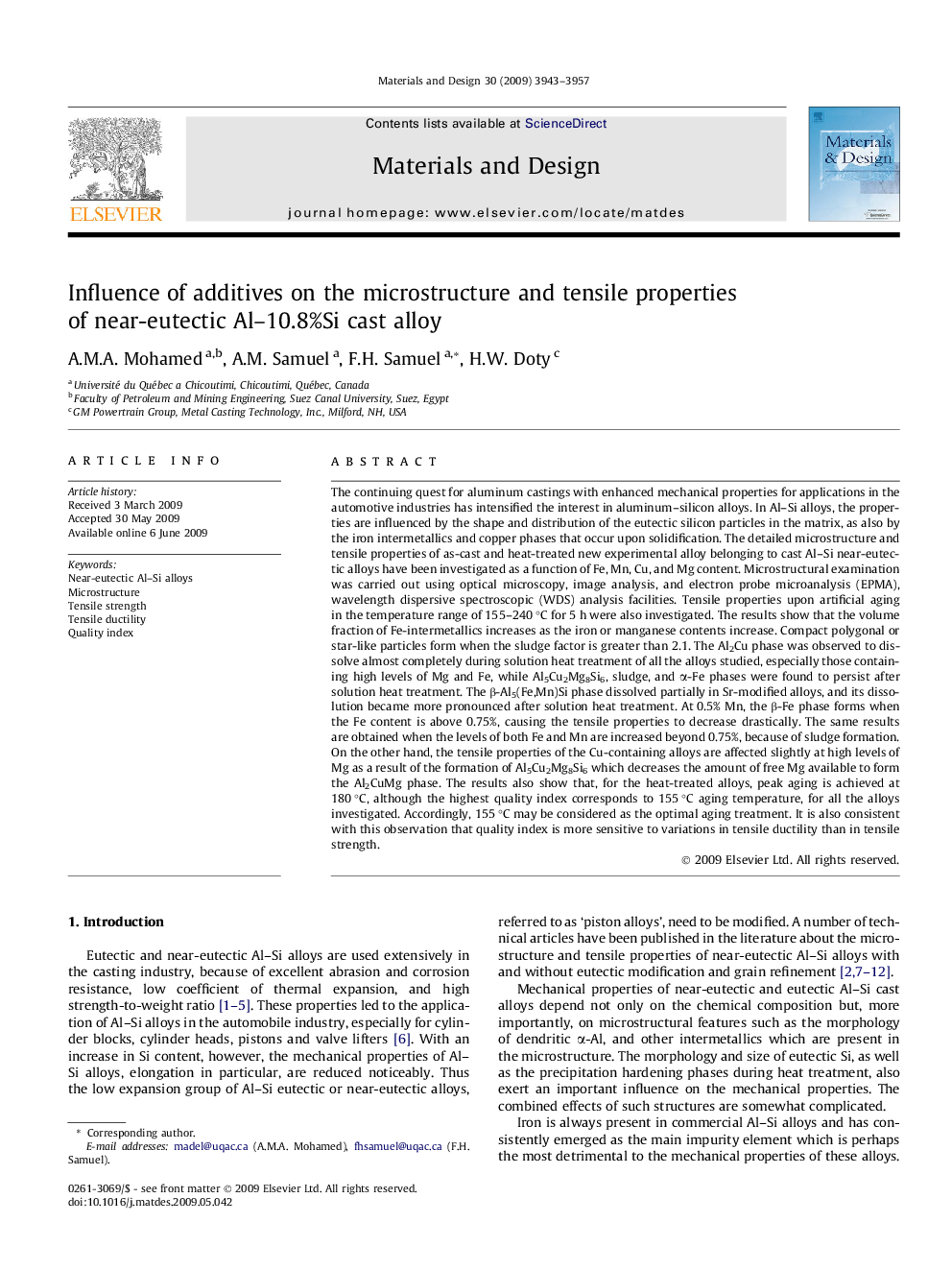| کد مقاله | کد نشریه | سال انتشار | مقاله انگلیسی | نسخه تمام متن |
|---|---|---|---|---|
| 832379 | 1470368 | 2009 | 15 صفحه PDF | دانلود رایگان |

The continuing quest for aluminum castings with enhanced mechanical properties for applications in the automotive industries has intensified the interest in aluminum–silicon alloys. In Al–Si alloys, the properties are influenced by the shape and distribution of the eutectic silicon particles in the matrix, as also by the iron intermetallics and copper phases that occur upon solidification. The detailed microstructure and tensile properties of as-cast and heat-treated new experimental alloy belonging to cast Al–Si near-eutectic alloys have been investigated as a function of Fe, Mn, Cu, and Mg content. Microstructural examination was carried out using optical microscopy, image analysis, and electron probe microanalysis (EPMA), wavelength dispersive spectroscopic (WDS) analysis facilities. Tensile properties upon artificial aging in the temperature range of 155–240 °C for 5 h were also investigated. The results show that the volume fraction of Fe-intermetallics increases as the iron or manganese contents increase. Compact polygonal or star-like particles form when the sludge factor is greater than 2.1. The Al2Cu phase was observed to dissolve almost completely during solution heat treatment of all the alloys studied, especially those containing high levels of Mg and Fe, while Al5Cu2Mg8Si6, sludge, and α-Fe phases were found to persist after solution heat treatment. The β-Al5(Fe,Mn)Si phase dissolved partially in Sr-modified alloys, and its dissolution became more pronounced after solution heat treatment. At 0.5% Mn, the β-Fe phase forms when the Fe content is above 0.75%, causing the tensile properties to decrease drastically. The same results are obtained when the levels of both Fe and Mn are increased beyond 0.75%, because of sludge formation. On the other hand, the tensile properties of the Cu-containing alloys are affected slightly at high levels of Mg as a result of the formation of Al5Cu2Mg8Si6 which decreases the amount of free Mg available to form the Al2CuMg phase. The results also show that, for the heat-treated alloys, peak aging is achieved at 180 °C, although the highest quality index corresponds to 155 °C aging temperature, for all the alloys investigated. Accordingly, 155 °C may be considered as the optimal aging treatment. It is also consistent with this observation that quality index is more sensitive to variations in tensile ductility than in tensile strength.
Journal: Materials & Design - Volume 30, Issue 10, December 2009, Pages 3943–3957